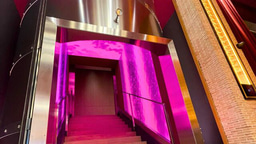Choosing DSP and Controller taking into account cost effectiveness

As someone deeply embedded in the AV sector for over seven years, I’m compelled to share insights gleaned from my experience. Being Harman distributor led me to explore DSP options, primarily utilizing BSS in many projects. However, being in a smaller country, we've also ventured into the realm of other esteemed manufacturers like Biamp and QSC. This diversified exposure has enriched our expertise, involving Biamp's Tesira and Voica, as well as QSC's impressive product lineup. Certifications from these industry leaders underline my dedication to excellence.
I'm excited to share my journey in selecting DSP and controllers, shedding light on the indicators that guide my decisions. The factors that drive me towards specific vendors and products are worth exploring, along with the pros and cons each brand offers.
BSS have BLU-100 with fixed configuration (12 inputs and 8 outputs) which we most of time use with BLU-BOB and we do not use most of its input channels. When Dante is required, using BSS is not being cost effective and nudging me towards Biamp and QSC. Notably, Biamp's AVB network protocol offers intriguing potential, although it necessitates specific switches. Interestingly, Biamp simplifies this by offering readily configured switches, which proved indispensable in a project where we initially struggled with a switch not bought from Biamp.
BSS offers other fixed I/O products like BLU-101, 102, and 103, featuring AEC, VOIP, and telephone input options. However, the absence of Dante or Cobranet ports necessitates Blu-Link products (Blu-link is BSS’s own network protocol). An economical workaround emerges with BSS's BLU-DAN in conjunction with BLU-100, enhancing cost-effectiveness. Good news is, with BSS's BLU-DAN in conjunction with BLU-100 and other fixed products lets you make cost effective solution.
In the Biamp corner, the TEC-1 controller stands out, an incredibly nice versatile tool providing extensive options. The Tesira Server Certificate which was my most interesting certificate journey with its challenging project which you need to program. It pushes you to learn all different capabilities of Tesira Server and TEC-1 and apply it. TEC-1 facilitates diverse controls across 32 lines, fostering creative solutions.
Controllers of QSC were only touch screens until QSC acquired Attero-Tech. QSC has also engaging certification platform. Nathan and Patrick makes this certification process very enjoyable. I want to send my thanks both of them.
Notably, QSC shines in scenarios necessitating multizone microphones, a feature absent in BSS and Tesira (Biamp Voica has microphone but because of EN-54 it makes Vocia expensive product. Its main area is PA system. BSS can be used only with different brand Dante microphones which creates another difficulty).
The Core 100f, with its flexible I/O ports, emerges as a personal favorite, supporting 8 variable I/O ports which is up to you to use it either for input or output depending on project. Second is having VOIP input on its main device makes it special and cost effective solution (BSS and Biamp gives VOIP option on not its main product but on its different more expensive products) Third advantage is QSC has very large option to use Core 100f as controller processor (BSS and Biamp Tesira has also processing options but very strict). 4th advantage of QSC is QSC’s own QSYS protocol uses Layer 2 and it gives you an option to use it on very large projects like we used it on Formula 1 Baku project which has 6 km circuit length.
While QSC boasts powerful solutions, geographical factors affect its competitiveness in the EMEA and European regions. BSS's expansive controller lineup, though aging in design, holds its ground but faces potential discontinuation. As we navigate this landscape, the hope lingers for BSS to introduce innovations akin to QSC's PS-1600G microphone.
While QSC has very powerful product on his hand but because of managing the EMEA and Europe region from a single point impacts its competitiveness with BSS. BSS controller lineup, though aging in design like BLU-3 and BLU-6 has to be discontinued. BSS has discontinued BLU-10 and hope will produce similar product like Biamp Tesira TEC-1. If BSS will produce microphone like QSC PS-1600G it will be also a good option.
In conclusion, this reflective journey underscores the dynamic landscape of DSP and controller selection. The nuances of each manufacturer's offerings are valuable in crafting cost-effective AV solutions. As we continue to evolve in this realm, the convergence of technical prowess and strategic pragmatism propels us forward.
I trust you've found these insights valuable and engaging.
Same on LinkedIn:






Please sign in or register for FREE
If you are a registered user on AVIXA Xchange, please sign in
What about Yamaha DSPs ?
Dear Jarle,
Yamaha has only one distributor in our country and because of not separating retail part from professional part, I could not have a chance to work with Yamaha DSPs. (We tried several times to have an agreement)
I have looked at their system, DSPs, controllers and microphones. They have not big choice of controllers and microphones for different type of projects. DSPs seems good as others.
So, I would not choose Yamaha DSPs as a good solution